Are you facing unusually high CPU and disk usage issues that create significant system performance drop issues and slow down your computer?
If this is the issue and you are worrying over it to find a way to solve your problem, then you’ve come to the right place.
I had been in a similar situation as you a few months ago.
It took me some time to figure out what was causing this problem and fix Windows Error Reporting high CPU and disk use on your computer.

This in-depth guide will describe some ultimate solutions to help you solve your problem. You will learn some of the best proven and tested solutions to fix your high CPU and disk usage issue on your Windows 11 or 10 computer.
Make sure you don’t skip any steps since I’ll walk you through the process.
Ok then, sit tight, and let’s get started.
Follow our guide on how to Fix Windows Activation Error Server.
Reason for Windows Error Reporting High CPU and Disk Usage
The reason for Windows Error Reporting High CPU and Disk Usage is outdated device drivers, corrupted or missing system files or malware. Also, corrupted or missing Registry keys, Werfault.exe application error is another common issue for Windows Error Reporting High CPU and Disk Usage.
So, when an issue occurs on your system, the Windows Error Reporting process sometimes unusually uses high CPU and disk, creating significant system performance drop issues and slowing down your computer.
Windows Error Reporting process is an automated error reporting tool used to collect Windows errors. This tool is also referred to as Werfault.exe.
The Werfault.exe is handled on the Windows Error Reporting process. This tool also monitors the stability of system files and applications.
When a system files or application crashes or runs into some troubles, the Windows Error Reporting tools help users send errors to Microsoft to quickly identify and fix the problem.
After reporting the error issue, Microsoft tried to provide solutions based on the error type. They try to solve the error issues by knowledge base articles, patches, or updates. Sometimes, the solution also comes in the future patch or update packs.
For this reason, Werfault.exe runs in the background, continuously monitoring and reporting problems.
The Windows Error Reporting tools help Microsoft assist developers in resolving issues and increasing the quality, efficiency, and performance of their systems.
In the next section, you will learn the proven and effective methods to solve the Windows Error Reporting tool’s high CPU and disk usage issue on your Windows computer.
Check out the easiest way to Fix Windows Audio Device Graph Isolation High CPU.
How to Fix Windows Error Reporting High CPU and Disk
Many Windows users reported high CPU and disk usage when the Windows Error Reporting tool processes.
The performance drops issue is created when the Windows Error Reporting process runs in the background. It slows down your computer because sometimes it unusually uses a high CPU and disk.
This section will describe some tested and proven solutions to your problem. By applying these solutions, you can effectively solve your problem.
So, let’s dive right in without further delay.
Here are the steps to fix Windows Error Reporting high CPU and disk usage:
1. Restart Windows Error Reporting Service
At first, to fix your Windows Error Reporting tool a high amount of CPU and disk usage issues on your Windows computer, try to restart your Windows Error Reporting Service.
Restarting the Windows Error Reporting Service may help you to solve the Windows Error Reporting tool a high amount of CPU and disk usage issues.
You may also like 7 Tested Solutions For Windows 11 High Disk Usage.
Here are the steps to restart the Windows Error Reporting Service:
- Press Windows + R key on your keyboard to open the Windows Run program.
- Type services.msc in the Run dialogue box, click on the OK button, or hit the Enter key to open the Services program.
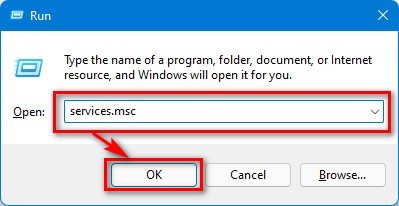
- Scroll down and find the Windows Error Reporting Service.
- Double-click on the selected service to open the Windows Error Reporting Service Properties window.
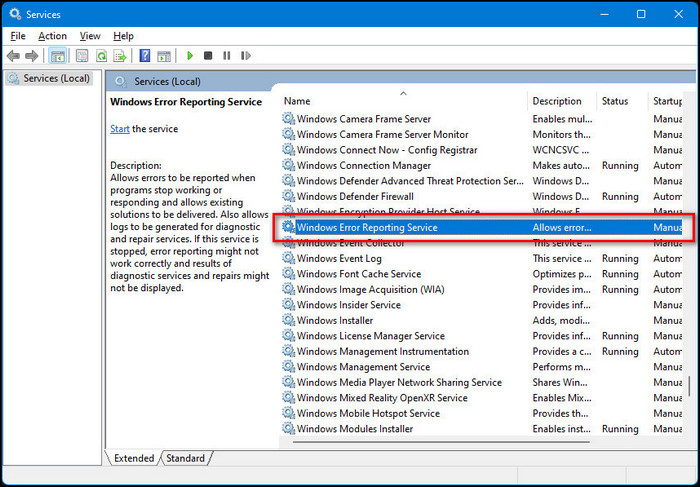
- Click on the Stop button to stop the service.
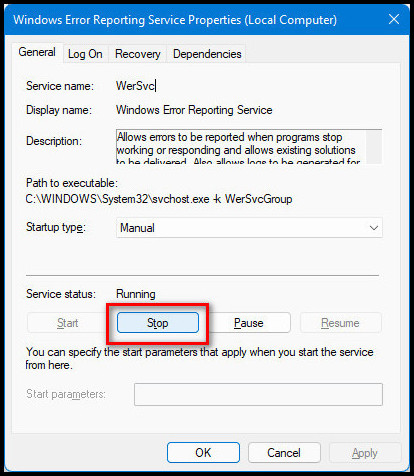
- Click on the Start button to start the service again after a while.
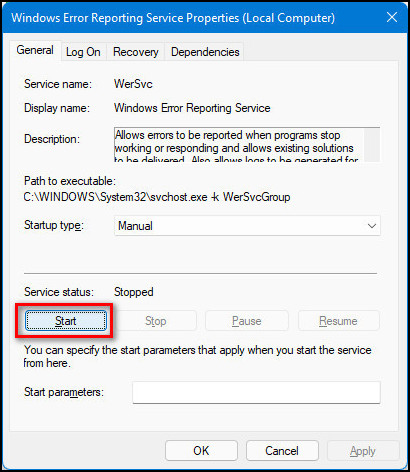
- Click on the OK button to close the Properties window. Image no: 1.7
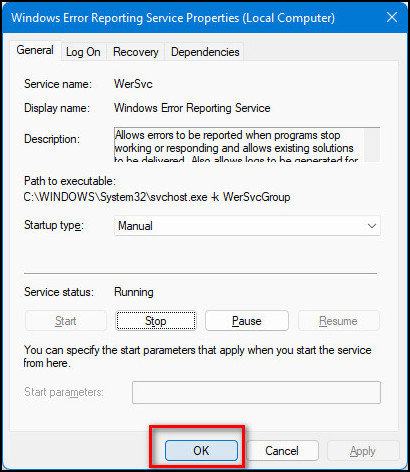
- Check to see whether your problem is solved or not. If not, follow the next solutions.
Also, follow our guide to Fix Installation Failed Error 800f0830 on Windows 11.
2. Run Windows Memory Diagnostic Tool
You can run the Windows Memory Diagnostic tool to solve your Windows Error Reporting high CPU and disk usage issues.
Here are the steps to run Windows Memory Diagnostic tool:
- Press Windows + S on your keyboard to open the Windows Search panel.
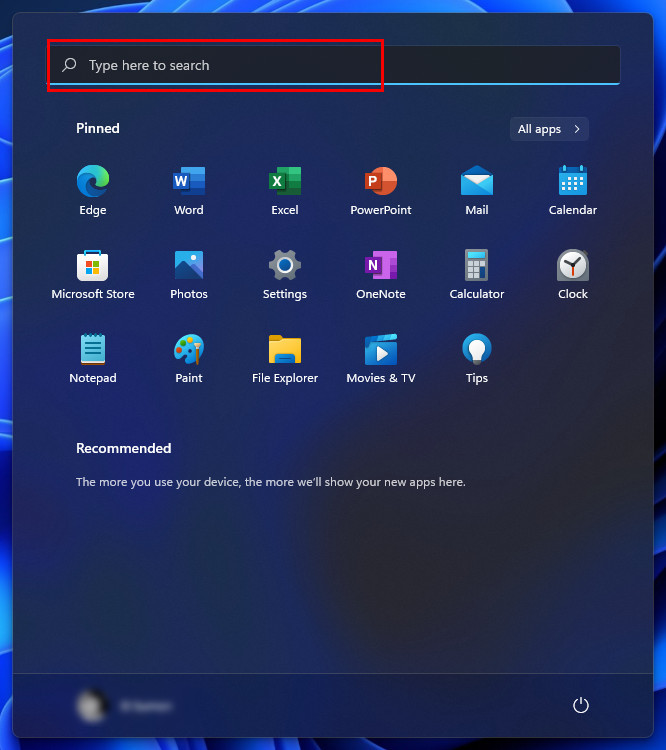
- Type Windows Memory Diagnostic on the search bar and click on the search result or hit the Enter key to open the Windows Memory Diagnostic tool.
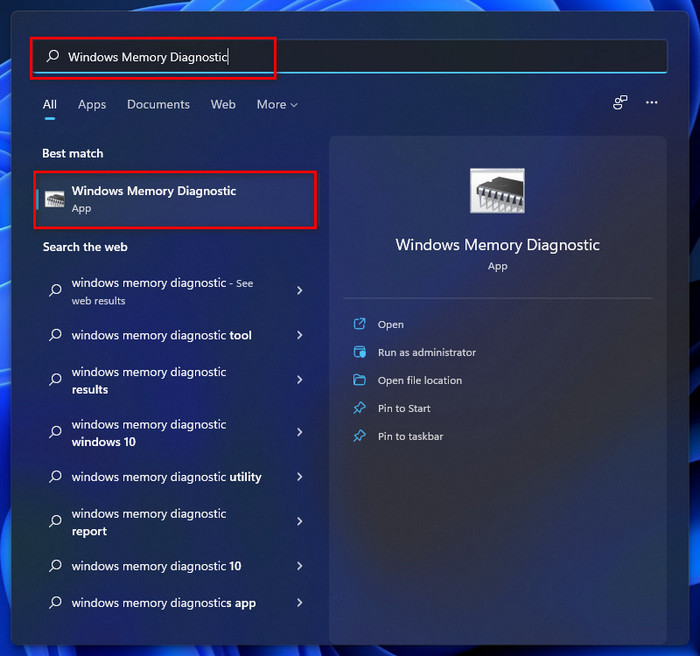
- Click on Restart now and check for problems option to check your computer for memory problems. Note: Save your work and close any open programs before restarting.
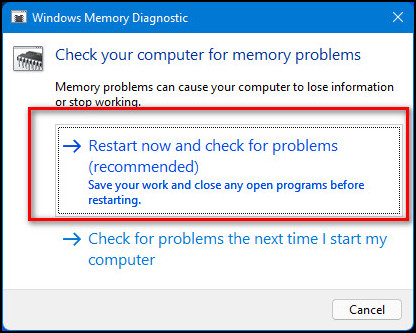
- Allow for a restart of your computer.
- During startup, the Windows Memory Diagnostic program will scan your computer, and the program will immediately apply a repair if any problems are discovered.
- Check to see whether your problem is solved or not. If not, follow the next solutions.
3. Run SFC & DISM Tool
System File Checker (SFC) and Deployment Image Servicing and Management (DISM) are useful tools to scan and repair errors on your Windows system.
You can run the SFC and DISM tool to solve your Windows Error Reporting high CPU and disk usage issues.
Here are the steps to run the SFC and DISM tool:
- Press Windows + S on your keyboard to open the Windows Search panel.

- Type cmd, and click on Run as administrator to open the Command Prompt with admin privileges.
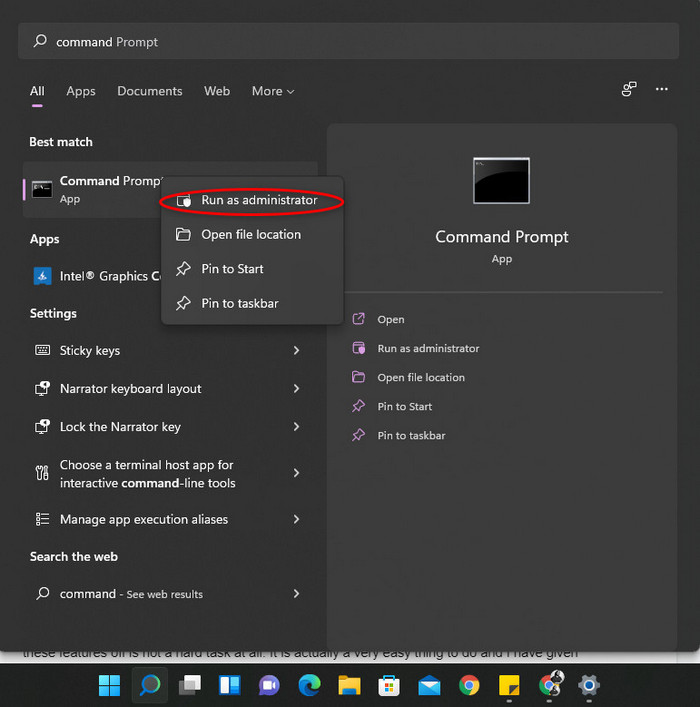
- Enter and execute the following commands one by one after completing each process. Image no: 3.3
- sfc /scannow
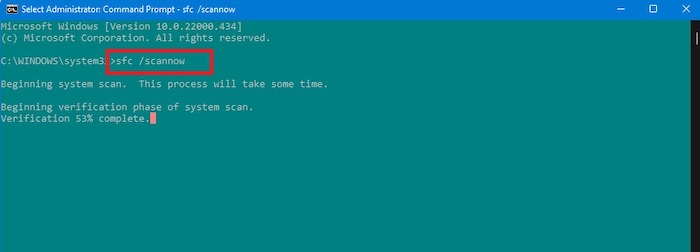
- DISM.exe /Online /Cleanup-image /Scanhealth
- DISM.exe /Online /Cleanup-image /Restorehealth
- Restart your computer after completing the process.
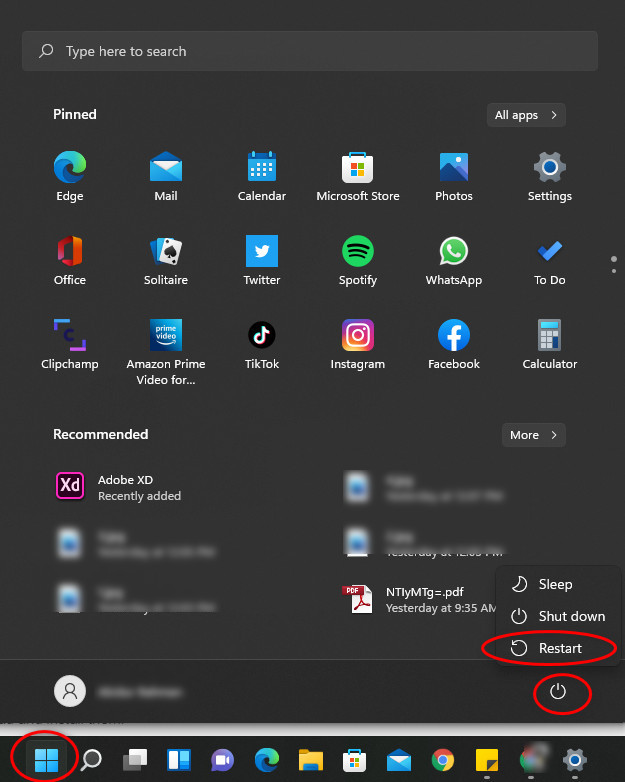
- Check to see whether your problem is solved or not.
4. Use Disk Cleanup Tool
Disk Cleanup is a powerful Windows built-in tool that can help you clear up space by deleting unwanted junk and temporary files.
You can resolve your Windows Error Reporting high CPU and disk use concerns by using the Disk Cleanup program.
Here are the steps to use the Disk Cleanup tool:
- Open the Windows Search panel, type disk cleanup on the search bar, and hit the Enter button to open the Disk Cleanup tool.
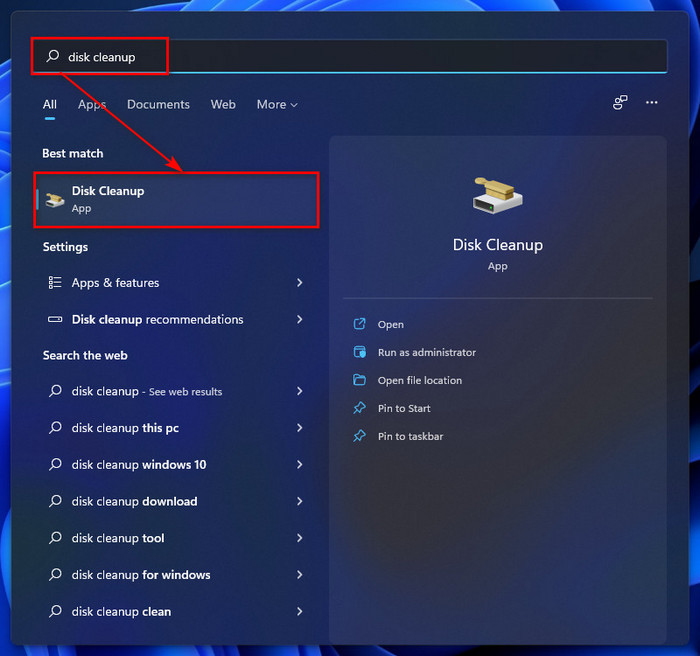
- Select the drive you want to clean up the unnecessary junk and temporary files.
- Click on the OK button and wait for a few seconds to analyze the unnecessary junk and temporary files.
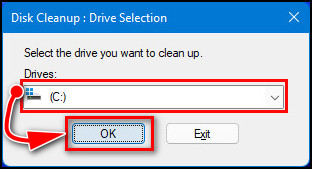
- Choose the files category you want to delete under the Files to delete.
- Click on the OK button and wait to clean up the disk space.
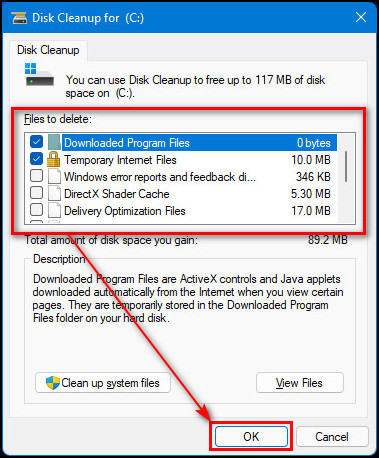
5. Disable Windows Error Reporting Service
If any of the previous methods do not solve your problem, the final solution is to disable the Windows Error Reporting Service.
To fix a high amount of CPU and disk usage issues of the Windows Error Reporting tool on your Windows computer, disabling the Windows Error Reporting Service solves your problem permanently.
Here are the steps to disable the Windows Error Reporting Service:
- Press Windows + R key on your keyboard to open the Windows Run program.
- Type services.msc in the Run dialogue box, click on the OK button, or hit the Enter key to open the Services program.

- Scroll down and find the Windows Error Reporting Service.
- Select and double-click to open the Windows Error Reporting Service Properties window.

- Click to open the drop-down menu next to the Startup type.
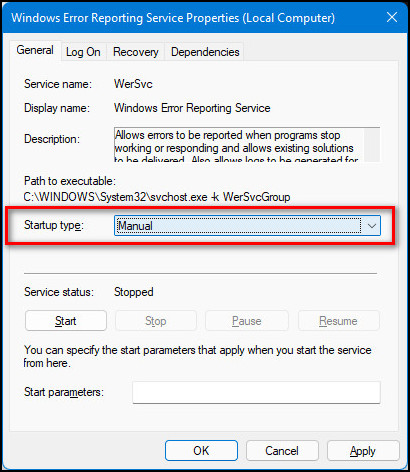
- Choose the Disabled option to disable the Windows Error Reporting Service.
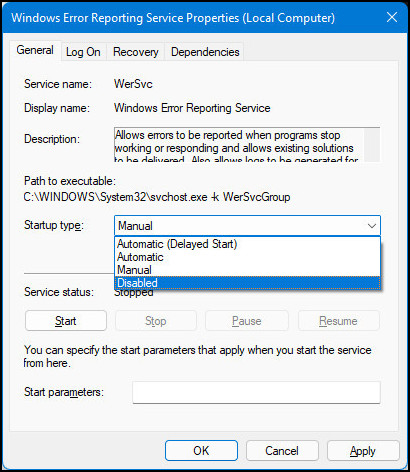
- Click on the Apply button to save the changes and OK to close the Properties window.
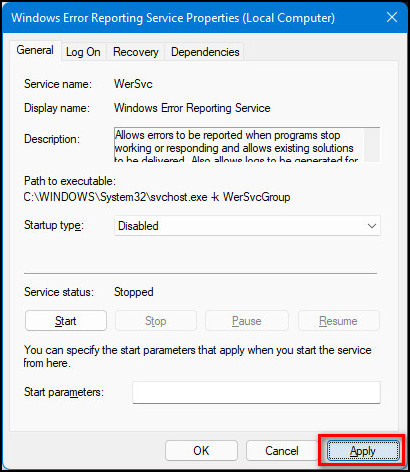
Check out our epic guide on how to Fix Sound Cracking Issue on Windows 11.
Final Thoughts
When an issue occurs on your system, the Windows Error Reporting process sometimes unusually uses high CPU and disk, creating significant system performance drop issues and slowing down your computer.
You may be worried and frustrated while facing this situation because you are not expecting this. Sometimes, it may happen, but you don’t need to worry about that.
After applying the methods I described in this post, you can successfully solve your Windows Error Reporting high CPU and disk use issue.
If any solutions can solve your problem, let me know which method works for you.
I hope this post is helpful for you and can help you solve your problem.
In the end, share this post with your friends who need this solution and check out other similar posts if you’re interested in learning more.




